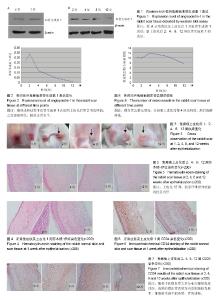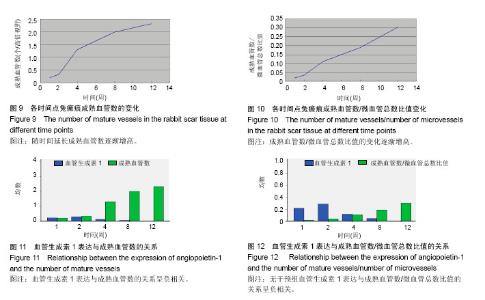| [1] 李高峰,罗成群,刘浔阳,等.瘢痕内微循环的变化[J].中华医学美学美容杂志, 2005, 11(4):223-226.[2] Kischer CW. Contributions of electron microscopy to the study of the hypertrophic scar and related lesions. Scanning Microsc. 1993;7(3):921-30;discussion 930-931.[3] 宋菲,刘英开,王西樵.增生性瘢痕发生和演变过程中微血管和氧分压动态变化的研究[J]. 上海交通大学学报:医学版, 2016, 36(11): 1553-1557.[4] Van der Veer WM, Niessen FB, Ferreira JA, et al. Time course of the angiogenic response during normotrophic and hypertrophic scar formation in humans. Wound Repair Regen. 2011,19(3):292-301.[5] 李荟元,刘建波.夏炜,等.增生性瘢痕动物实验模型的建立与应用[J]. 中华整形外科杂志, 2001, 17(5): 275.[6] Morris DE, Wu L, Zhao LL, et a1. A cute and chronic animal models for excessive dermal scarring: quantitative studies. Plast Reconstr Surg.1997; 10(7): 674-681.[7] 王西樵,刘英开,毛志刚,等.增生性瘢痕中成纤维细胞生物学功能变化与微血管病理改变的研究[J].创伤外科杂志,2007,9(4):311-314.[8] Karamysheva AF. Mechanisms of angiogenesis. Biochemistry (Mosc). 2008;,73(7):751-762.[9] Eming SA, Brachvogel B, Odorisio T, et al. Regulation of angiogenesis: wound healing as a model. Prog Histochem Cytochem. 2007;42(3):115-170.[10] Otrock ZK,Mahfouz RA,Makarem JA,et al.Understanding the biology of angiogenesis:review of the most important molecular mechanisms. Blood Cells Mol Dis. 2007;39(2):212-220.[11] Andrikopoulou E, Zhang X, Sebastian R,et al. Current Insights into the role of HIF-1 in cultaneous wound healing. Curr Mol Med. 2011; 11(3):218-235.[12] Yun JH, Lee HM, Lee EH,et al. Hypoxia reduces endothelial Ang-1 induced Tie-2 activity in a Tie-1 dependent manner. Biochem Biophys Res Commun. 2013; 436(4):691-697.[13] Takakura N, Watanabe T, Suenobu S, et al. A role for hematopoietic stem cells in promoting angiogenesis. Cell. 2000;102(1):199-209.[14] Witaenbichler B, Maisonpierret PC, Jones P, et al. Chemotactic properties of angiopoietin-1 and -2, ligands for the endothelial-specific receptor tyrosine kinase Tie-2. J Biol Chem.1998; 273(29): 18514-18521.[15] Papapetropoulos A, Fulton D, Mahboubi K, et al. Angiopoietin-1 inhibits endothelial cell apoptosis via the Akt/Survivin pathway. J Biol Chem. 2000; 275:9102-9105.[16] Wong A L, Haroon Z A, Werner S, et al. Tie 2 expression and phosphorylation in angiogenic and quiescent adult tissues. Circ Res.1997;81:567-574.[17] 胡维新.医学分子生物学[M].北京: 科学出版社, 2007: 187.[18] 罗杰,王长谦,黄定九.CD34基因与血管内皮细胞[J]. 国外医学:生理、病理科学与临床分册, 2000, 20(6):442-444. |





